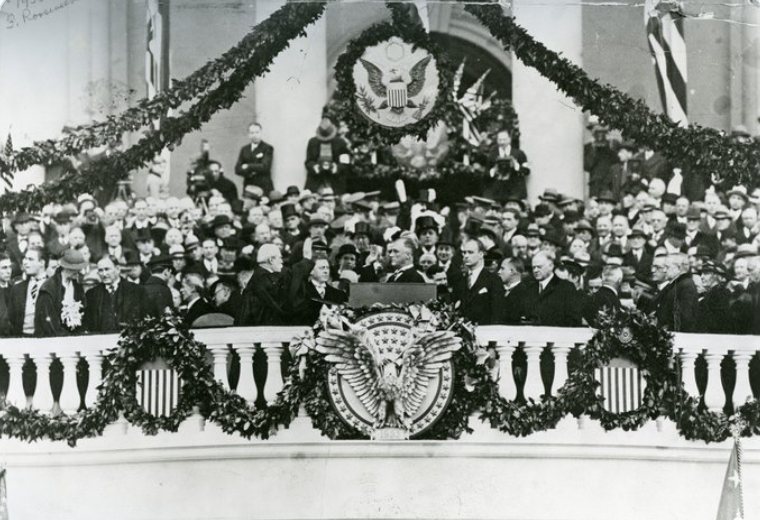Introduction: Franklin Delano Roosevelt, often revered as FDR, stands as one of the most influential and transformative figures in American history. Serving as the 32nd President of the United States from 1933 until his death in 1945, Roosevelt’s leadership during the tumultuous years of the Great Depression and World War II reshaped the nation’s political landscape and fundamentally altered the role of government in American society.
Early Life and Political Career: Born on January 30, 1882, into a wealthy and politically prominent family in Hyde Park, New York, Roosevelt enjoyed a privileged upbringing. Despite facing personal challenges, including contracting polio in 1921, which left him partially paralyzed, Roosevelt exhibited remarkable resilience and determination throughout his life.
Roosevelt’s political career began to flourish in the early 20th century. He served as Assistant Secretary of the Navy under President Woodrow Wilson during World War I, where he gained valuable administrative experience and earned national recognition. In 1920, Roosevelt ran unsuccessfully for Vice President on the Democratic ticket. However, this setback did not deter his ambition, and he later served as Governor of New York from 1929 to 1932.
The New Deal: Assuming the presidency amidst the depths of the Great Depression in 1933, Roosevelt embarked on an ambitious agenda to combat economic collapse and restore hope to the American people. Central to his approach was the implementation of the New Deal, a series of sweeping reforms and relief programs aimed at providing immediate relief, recovery, and reform.
Roosevelt’s administration wasted no time in enacting bold legislative initiatives. The Emergency Banking Act, the National Industrial Recovery Act, and the Agricultural Adjustment Act were among the landmark pieces of legislation passed during the early days of his presidency. These measures aimed to stabilize the financial system, stimulate economic activity, and alleviate the suffering of millions of Americans devastated by unemployment and poverty.
“The only thing we have to fear is fear itself.”
The hallmark of the New Deal was its commitment to social welfare and government intervention in the economy. Programs such as the Civilian Conservation Corps (CCC), the Works Progress Administration (WPA), and the Social Security Act provided employment opportunities, infrastructure development, and a safety net for the most vulnerable members of society.
“I pledge you, I pledge myself, to a new deal for the American people.”
Roosevelt’s leadership style was characterized by pragmatism, experimentation, and a willingness to adapt to changing circumstances. His fireside chats, radio broadcasts in which he communicated directly with the American people, became a powerful tool for rallying public support and confidence in his administration’s policies.
World War II and Global Leadership: As the clouds of war gathered over Europe and Asia in the late 1930s, Roosevelt navigated the United States through a period of isolationism and uncertainty. Despite facing opposition from isolationist factions within Congress and the public, Roosevelt recognized the threat posed by Nazi Germany and Imperial Japan and took steps to strengthen America’s military preparedness.
The attack on Pearl Harbor on December 7, 1941, thrust the United States into World War II, marking a defining moment in Roosevelt’s presidency. In the wake of the attack, Roosevelt delivered his famous “Day of Infamy” speech to Congress, galvanizing public opinion and laying the groundwork for U.S. involvement in the global conflict.
“Yesterday, December 7, 1941—a date which will live in infamy—the United States of America was suddenly and deliberately attacked by naval and air forces of the Empire of Japan.”
Throughout the war, Roosevelt demonstrated exceptional leadership on the international stage, forging alliances with Britain, the Soviet Union, and other Allied powers to defeat the Axis powers. His diplomatic skills and strategic vision were instrumental in shaping the post-war world order and laying the foundation for the United Nations, a multilateral organization aimed at promoting peace and cooperation among nations.
Legacy: Franklin D. Roosevelt’s presidency left an indelible mark on American history, fundamentally transforming the role of the federal government and reshaping the social and economic landscape of the nation. His leadership during the Great Depression and World War II earned him widespread acclaim as one of the greatest presidents in U.S. history.
“The test of our progress is not whether we add more to the abundance of those who have much; it is whether we provide enough for those who have too little.”
The enduring legacy of the New Deal persists to this day, with many of its key programs, such as Social Security and the Federal Deposit Insurance Corporation (FDIC), remaining cornerstones of American society. Roosevelt’s vision of an active and compassionate government committed to promoting the welfare of its citizens continues to influence political debates and policymaking in the United States.
Conclusion: In conclusion, Franklin D. Roosevelt’s presidency stands as a testament to the power of leadership in times of crisis. Through his bold initiatives, unwavering resolve, and steadfast commitment to the principles of democracy and equality, Roosevelt inspired a generation and laid the groundwork for a brighter future for the American people.
“Democracy cannot succeed unless those who express their choice are prepared to choose wisely. The real safeguard of democracy, therefore, is education.”

